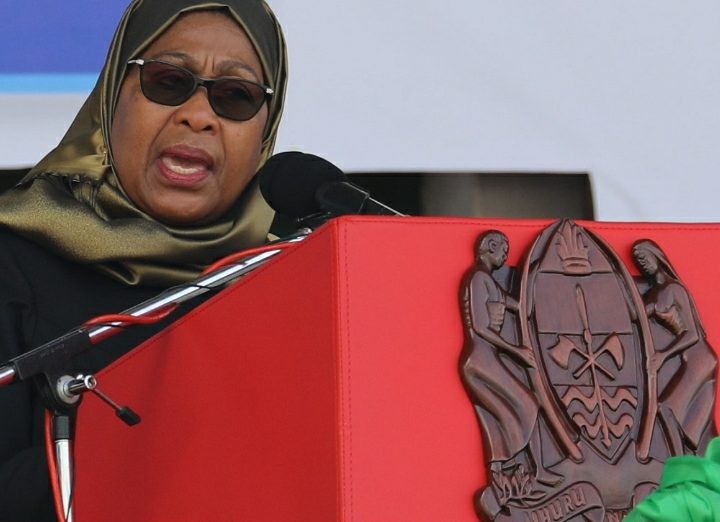ALMOST everyone who matters is lately obsessed with talking about growing public debt in Africa. In May this year at its Plenary Session on May 31, 2021, the African Economic Research Consortium (AERC) had conversation on the “looming debt crisis”.
The Session was informed that since 2013, the number of African economies in debt distress has grown from 6 to 15. Data shows 19 African countries have exceeded the 60% debt-to-GDP threshold set by the African Monetary Cooperation Program (AMCP), while 24 countries have surpassed the 55% debt-to-GDP ratio suggested by the International Monetary Fund (IMF) as the cut-off point to crisis.
A conversation among economists cannot end without a quick quip, “Africa is heading back to the HIPC era”. HIPC stands for “heavily indebted poor countries” coined by the World Bank, the IMF and other multilateral, bilateral and commercial creditors in 1996 as an initiative to realize 36 stinking poor yet heavily indebted countries of the debt they carried.
A similar one called the Multilateral Debt Relief Initiative (MDRI) was established in 2005. They literally relieved us the debts we owed them, for we were too poor to afford paying back the debts. By 2017, they had provided debt relief to 36 countries worth $99 billion, that is, three times Uganda’s GDP today.
Only 6 HIPC were not African. Tanzania was an unofficial chairman of the HIPC, Uganda the chief whip for the likes of Rwanda, Burundi, DRC, Ethiopia, Zambia and all the unusual suspects.
The fear now among economists and non-economists alike is that we might be heading back to the HIPC days. We have acquired a lot of non- concessional debt with relatively higher interest rates and lower maturities. Africa has also acquired private non-guaranteed debt, now at $110 billion, rising from under $35 billion in 2006.
Highly Indebted Poor Individuals
The scary part is that if African countries fail to pay up this time, there might be consequences and they might be severely punished or loses their collaterals.
This is the fuss that keeps economists and media busy. Yet the way folks running around and voicing hoarse about national indebtedness-or their acquaintances- are personally indebted to the marrow. They are highly indebted poor individuals (HIPI) and not even eligible for debt relief.
I spent the last week in Nairobi with an interesting group of people from all parts of Africa (Eastern, Northern, Southern and Western Africa) and beyond. We had a conversation on private debt in Africa that, surprisingly, no one seems interested in.
We were talking about individuals and businesses borrowing habit in African that has silently skyrocketed by observing ourselves and our countries. We wanted to know the driving causes and the extent of private borrowing and lending in Africa.
As we discuss how African countries have borrowed a lot from China, the debt owed by individual Africans and private businesses has now reached a crisis level. From salary loans to mortgages to school fees loans, crop finance and burial loans, Africans are borrowing their way bankruptcy. Or is it homeruptcy (since a typical Tanzanian keeps his/her money at home in a secret place)?
Getting Trapped into Debt
We wanted to know the extent of debt among vulnerable groups such as single mothers and the elderly being targeted by all sorts of financial service providers, formal and informal?
What about debt accumulated by the youth in pursuit of opportunities inform of SME start-ups and/ or sports betting hoping to hit a jackpot that would ensure them with capital to invest in a reputable business?
What is the extent of debt to a worker in the informal sector acquired to expend their business operating in the small scale economies – showing a few thousands every week? What about the debt incurred by petty farmers in an effort to commercialize their rain-fed-pest-infested farms?
What are the drivers of consumer debt that keeps rising among Africans? A friend working in Nairobi told me he can no longer send his mother money on his cellphane without inquiring first whether her mobile phone money wallet is “clean”. His mother is often in debt such that as sooner as the remittances from her son lands in her wallet, the telecom company debits the cash.
When I checked with one of my former students working with a telecom company, she told me nearly 8 in 10 boda- boda (motorcycle) drivers are indebted by the company they works for. Those who use boda-boda services as couriers have encountered a moment when you wanted to send the rider mobile money and he stopped you saying,” Don’t send it in my phone; I have a debt.”
Africans (poor and well offs alike) are increasingly getting trapped in debt where they seem unable to service without borrowing. Just look around your small community, starting with your own household; they feel they cannot survive ( or so they think) without getting personnel, business or corporate loan.
We now have all sorts of loans; quick loan, instant loan, special loans; quick loan, instant loan, special loan, emergency loan, school fees loan, asset financing loan, business loan, housing loan, working capital loan, agriculture loan, wedding loan; bridging finance loan(extended to those who want to kick-start a Ponzi scheme), discount loan, insurance premium finance loan, and so many other forms of loans.
Financial Laws Protect Lenders, Not Borrowers
There is a systemic pattern where the financial promoters perhaps do not want people- they are purportedly helping to access credit- get out of debt. In pursuit of sustained profitability lenders are keeping borrowers in debt cycle thet keeps on rising.
Although the current highly decentralized credit system enabled people-; men and women; old and youth- to access capital and improve their lives, it lacks ethical and moral codes that dictates a conventional credit system. In the past, lenders were more concerned with the socio-economic welfare of loaners.
The current system is more driven by profits, no matter the means- micro-credit, mobile lending or any other financial technology (FinTech). As long as there is evidence of some of the money going to the poor, the lenders will go for it.
If they learn that an elderly woman is receiving some monthly allowance from TASAF, they start luring her to borrow. If a young man shows signs of prospering in organic farming, they target him with crop finances that he probably doesn’t need. Financial inclusion promoters only highlights the few success stories of their programs, which leads of the poor to fall into their trap.
This is the crisis that we have ignored. The current system has failed to help the poor, and in a world of eat or be eaten. The financial laws are designed to protect and benefit the lender and not the borrower. Even where a semblance of consumer protection policies and laws has been enacted, they are not enforced.
Financial service providers (formal or informal) capitalize on the financial illiteracy and people’s gullibility to fleece them. They hide information or make partial disclosure of information to borrowers to hide unfair contract terms from them.
Borrowing to buy anything government should provide
We are busy celebrating and hyping the increasing availability of credit at household level. Yet it is being fueled by global phenomenon of financialization where private capital is seeking to reproduce itself without value creation. In effect, this has increased both private and public debts where vulnerable groups face a disproportionate burden of paying back.
These are some of the abusive lending practices in the context of inadequate social protection we were discussing in Nairobi. We we’re hosted by the Open Society Initiative for Eastern Africa (OSIEA) to have a candid conversation on these issues.
It is abusive lending when people borrow to buy things that government is supposed to provide or ensure that they are provided by the private sector at subsidized/low interest rates. We are talking about public services such as basic healthcare and education, public transport, water and other utilities.
During the FisScope survey in 2017, Tanzanians were asked to mention how they finance expenses. The majority of them said they borrow to cover the expenses. What are these expenses? Paying school fees for children and the accompanying opportunity costs, closely followed by medical expenses, rent and utilities(such as electricity, water and energy).
Shoving Money Down our Throats
The neoliberals told government in Africa that they should leave public and merit goods such as health and education to market forces. People pay millions to deliver babies (by caesarean); pay millions to have the baby when she turns 3 to attend kindergarten; pay market prices to see a Pediatrician when the baby gets a viral infection; pay millions to see them thorough schools; pay millions to rent an apartment to rear the kids; pay full-cost-recovery market prices for electricity, gas and water.
These are the expenses that are forcing people to accumulate private debt at a rate faster than the national debt we love to comment about. Yet the states are expecting the same highly indebted poor individuals to pay the national debt as well.
There is also a real crisis we must deal with. Financial institutions are setting up people to borrow but make sure they fail to pay back such that they( the lenders) can take the usually more valuable collaterals (economists call it predatory lending) or that the borrowers get tied in perpetual debt so they pay the lenders interest forever. All these are happening when the state and its appointed regulators are just watching.
One for the road: who told the world that everyone needs to borrow? Nearly 4 out of 5 people from financial sector I meet, come to me with the intention; of luring me into borrowing. Why is the neoliberal system so determined to shave money we don’t need down our throats? And it has made us believe that we need to borrow in order to live!
We need to change our mindsets.










